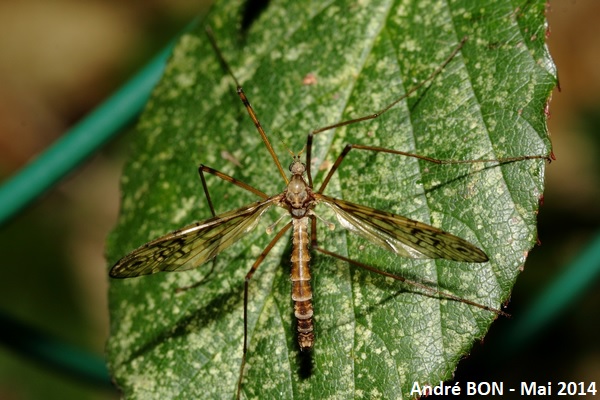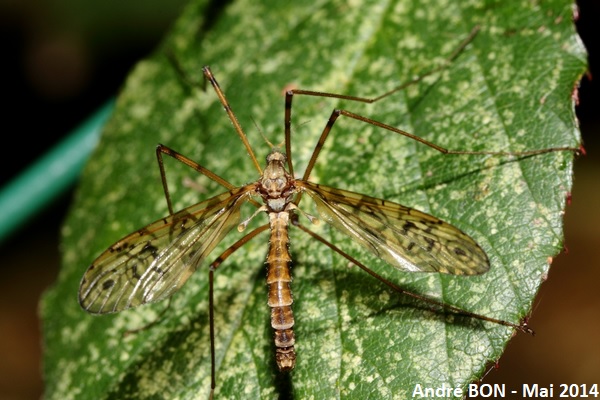

| Epiphragma ocellare (Linnaeus, 1760) |


|
|
Scientific name: Epiphragma ocellare (Linnaeus, 1760) Common name: French name: Order: Diptera Family: Limoniidae Wingspan : Body size: 11 to 13 mm; Wingspan: 18 to 25 mm. Biotope: Woodlands, forests, woodland edges, hedgerows. Geographic area: Palaearctic region. Observation period : May-June. |
The members of the Limoniidae family differ from those of the Tipulidae family by their short snout and by the sub-costal vein of the wing joining the costal vein and the radial vein. Like other crane files the abdomen is elongated and the legs are long and fragile. Limoniidae have large translucent wings ornated with spots, lines and dots whose arrangement is often the key to tell species apart. You can easily recognize Epiphragma ocellare by the distinctive patterns with ocelli on its wings. The femurs show two subapical dark brown rings. Some members of the Discobola genus also show wing patterns with ocelli, but often in a larger number and of a smaller size. You can recognize them with the additional vein in cell A1, connecting the two anal veins. Epiphragma ocellare larvae grow in rotten wood. Adults have a very short life. |
| [To know more about the Epiphragma ocellare] [Next picture] [Top] |

|
Here is a new visitor in my garden and species identification is easy for this one. |
| [To know more about the Epiphragma ocellare] [Previous picture] [Top] |

|
You can see, on this picture, the sub-costal vein forking to the costal vein and radial vein. There is no cross vein between the two anal veins. |